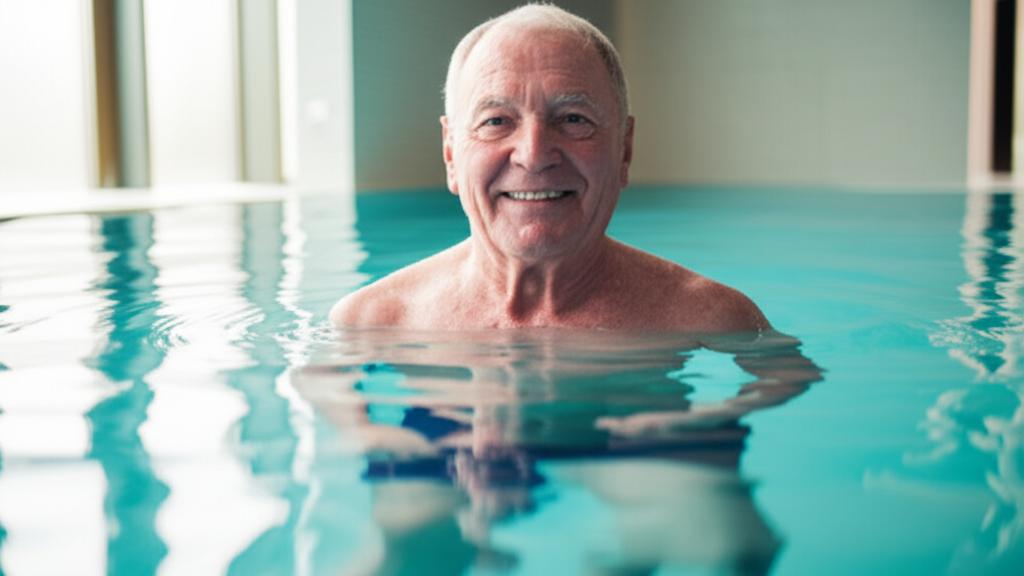I Remember a patient of mine, a lovely gentleman with arthritis in his knees, who described his mornings as “a battle with rust.” Every step was a grind. He loved gardening but had to give it up. Then, he started doing simple exercises in a warm-water pool at the local community center. The change wasn’t overnight, but slowly, he found relief. He told me, “Doc, in the water, I feel light again.” That, in a nutshell, is the simple magic behind Hydrotherapy. It’s the practice of using water to help ease pain and improve movement, offering a gentle path toward feeling better.
What Exactly Is Hydrotherapy?
It’s a broad term, really. You might hear it called aquatic therapy, water therapy, or even balneotherapy. At its core, it’s any treatment that uses water to soothe the body. This can be as simple as a warm Epsom salt bath at home or as structured as a session in a specialized therapy pool with a physical therapist.
Water works in a few wonderful ways:
- Buoyancy: Water supports your weight, taking the pressure off of aching joints and muscles. This is why my patient felt “light.” It allows you to move and stretch in ways that might be painful on land.
- Temperature: Warm water can relax tight muscles and increase blood flow, which helps with healing. Cold water or ice packs, on the other hand, are fantastic for reducing inflammation and swelling.
- Resistance: Just moving through water creates gentle resistance, which can help build strength without the impact of weights or hard surfaces.
It’s important to know that hydrotherapy is generally considered a complementary or alternative treatment. While studies show real benefits for certain symptoms, it’s not a cure-all. You’ll see some wild claims online, so it’s always best to approach it with a level head and chat with your doctor first.
Who Might Find Relief with Water Therapy?
While nobody technically needs hydrotherapy, it can be a fantastic tool for managing symptoms for a wide range of people. It’s not meant to replace your prescribed treatments, but to work alongside them. Think of it as another tool in your wellness toolkit.
I’ve seen it make a real difference for people dealing with chronic pain and stiffness. Here’s a quick look at who might benefit.
| Condition or Situation | How Hydrotherapy Might Help |
|---|---|
| Osteoarthritis or Ankylosing Spondylitis | The warm water and buoyancy can ease joint stiffness and allow for a greater range of motion with less pain. |
| Fibromyalgia or Multiple Sclerosis (MS) | Gentle water exercises can help with muscle pain and fatigue without over-exerting the body. The warmth is often very soothing. |
| Post-Injury or Surgery Recovery | Once your doctor gives you the all-clear (especially regarding incisions!), water provides a safe space to start rebuilding strength and flexibility. |
| Pregnancy | Floating can relieve the pressure on your back and feet. Some women also find laboring in a warm water tub helps manage pain and anxiety. |
| Burn Injuries | Under medical supervision, specialized hydrotherapy can be used to gently clean wounds and may help reduce pain and scarring. |
A quick note on weight loss: while exercise in water is excellent for burning calories and is easier on the joints, hydrotherapy by itself won’t cause you to lose weight. It’s the activity in the water that helps!
Potential Risks and How to Stay Safe
The biggest advantage of hydrotherapy is that it’s gentle and, when done correctly, very safe. The goal is to feel better, not worse!
The best part is finding a way to reduce your symptoms—like pain, swelling, and stiffness—without necessarily needing more medication. It empowers you.
However, there are a few things to be mindful of:
- Slips and Falls: Water makes surfaces slippery. Always be careful getting in and out of tubs or pools.
- Temperature: Water that’s too hot can be dangerous, especially if you have heart conditions or are pregnant. Water that’s too cold can cause a shock to your system. And using ice packs for too long can cause frostbite.
- Infection: If you have an open wound, a burn, or a recent surgical incision, you must get clearance from your doctor before getting into a pool or tub to avoid infection.
Most importantly, be a savvy patient. If a clinic or website promises that their special water jet will “remove toxins” or “cure” a serious disease, be very skeptical. Real hydrotherapy is about symptom management and support, not miracles.
Take-Home Message
- Hydrotherapy is simply using water—hot, cold, still, or pressurized—to help relieve physical symptoms.
- It’s fantastic for easing joint stiffness, muscle soreness, and swelling associated with conditions like arthritis and fibromyalgia.
- Think of it as a helper, not a cure. It should complement, not replace, the treatments your doctor has prescribed.
- Always, always chat with your healthcare provider before starting any new therapy, even something that seems as simple as a hot bath.
- Be wary of anyone who claims hydrotherapy can cure diseases or “detoxify” your body. Stick to reputable, certified providers.
If you notice any new pain, swelling, a rash, or things just don’t feel right after a session, please give your doctor a call. We’re here to figure it out with you.
Finding ways to feel better in your own body is a journey, and you’re not on it alone.


